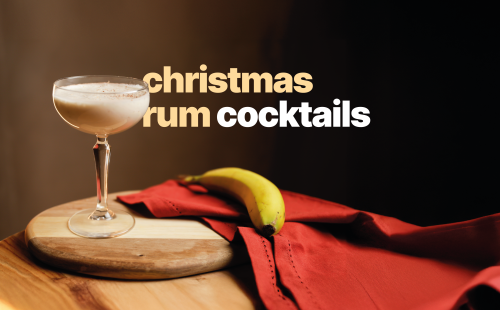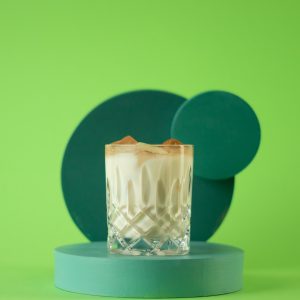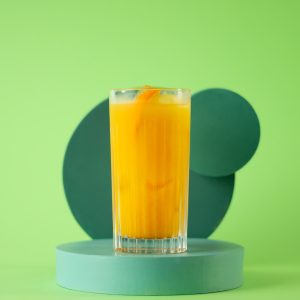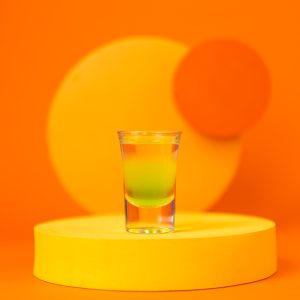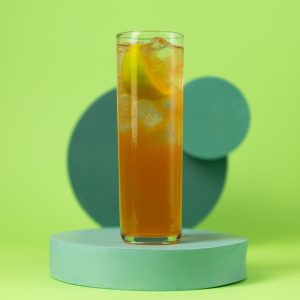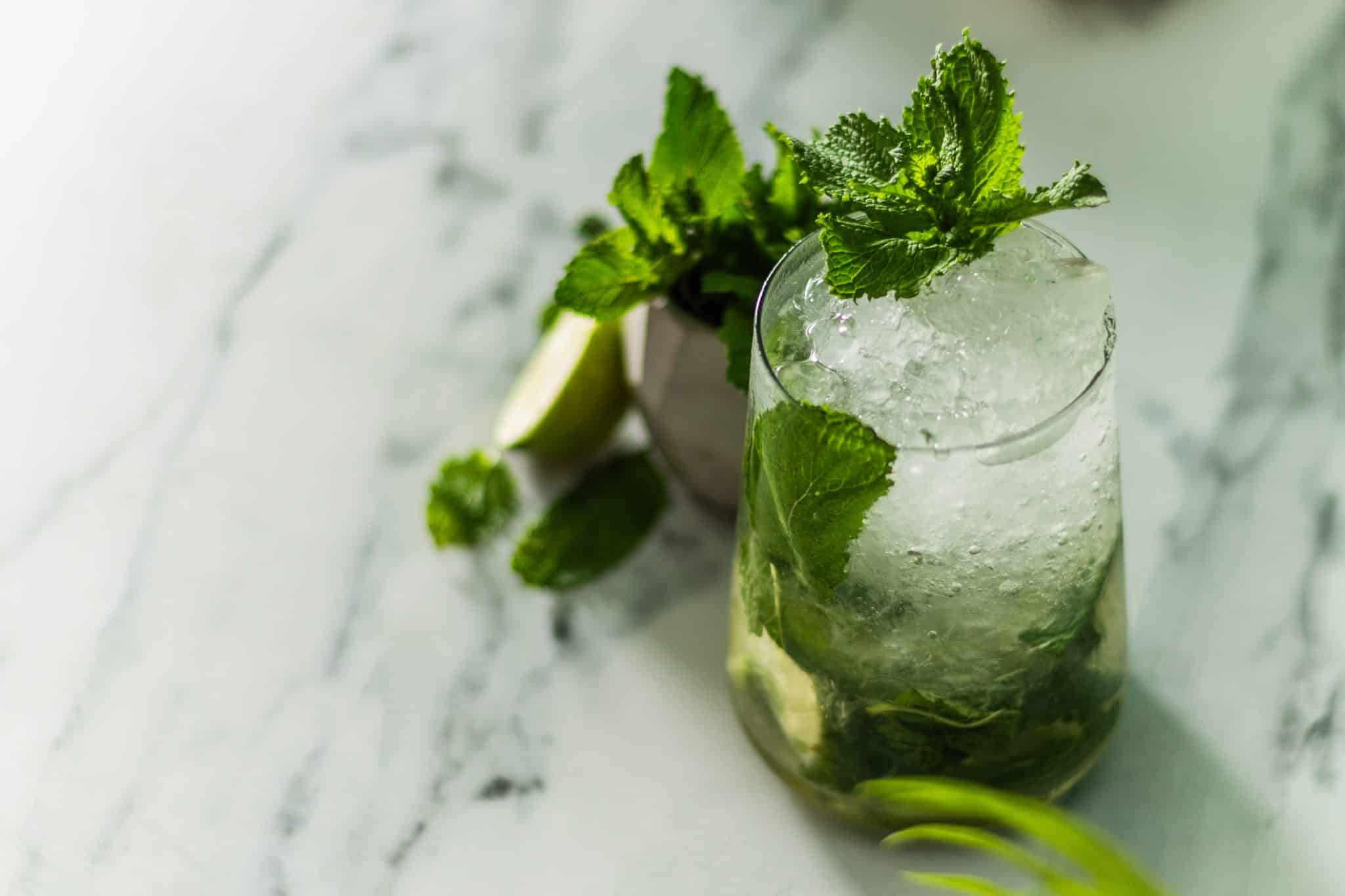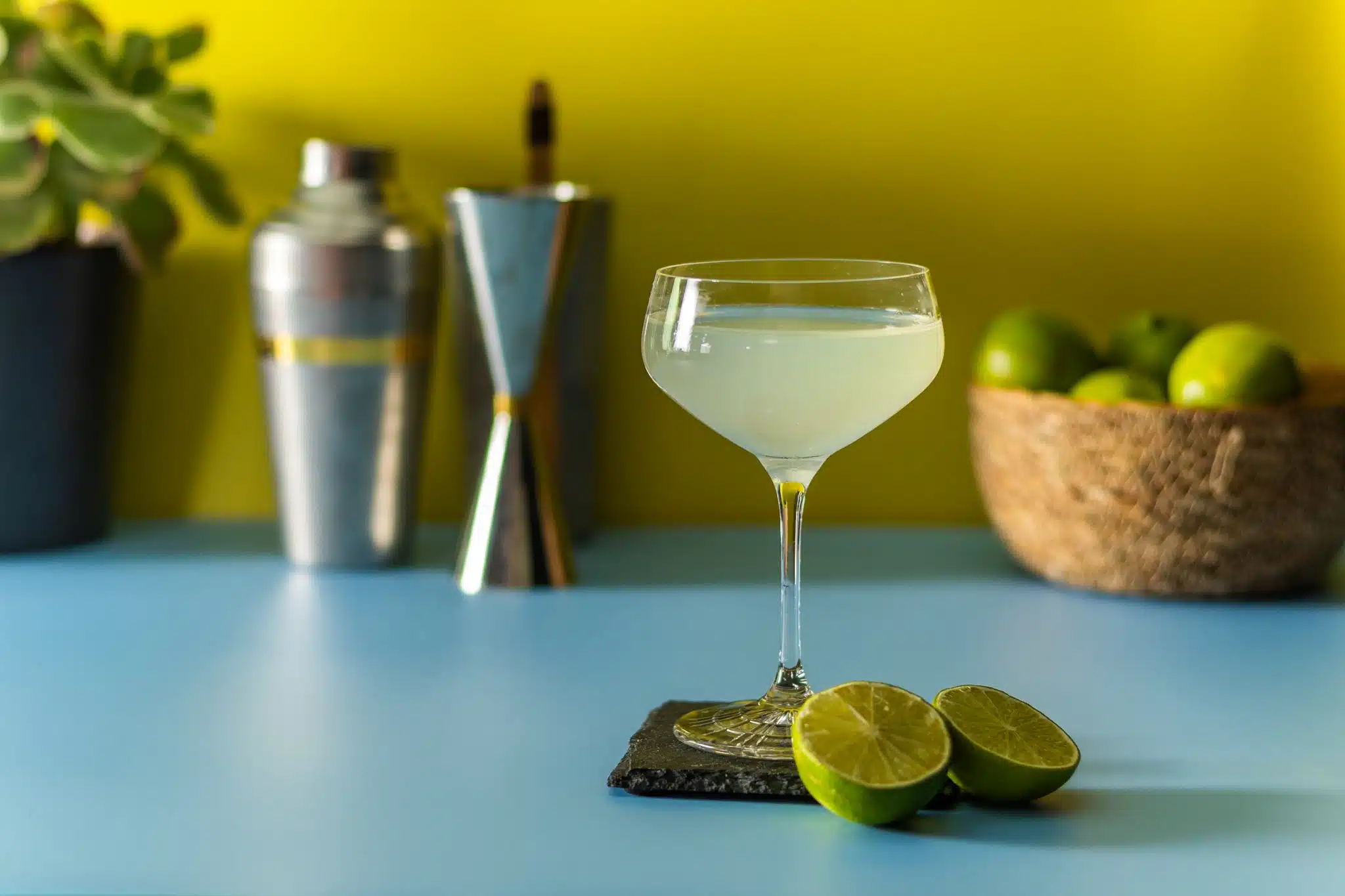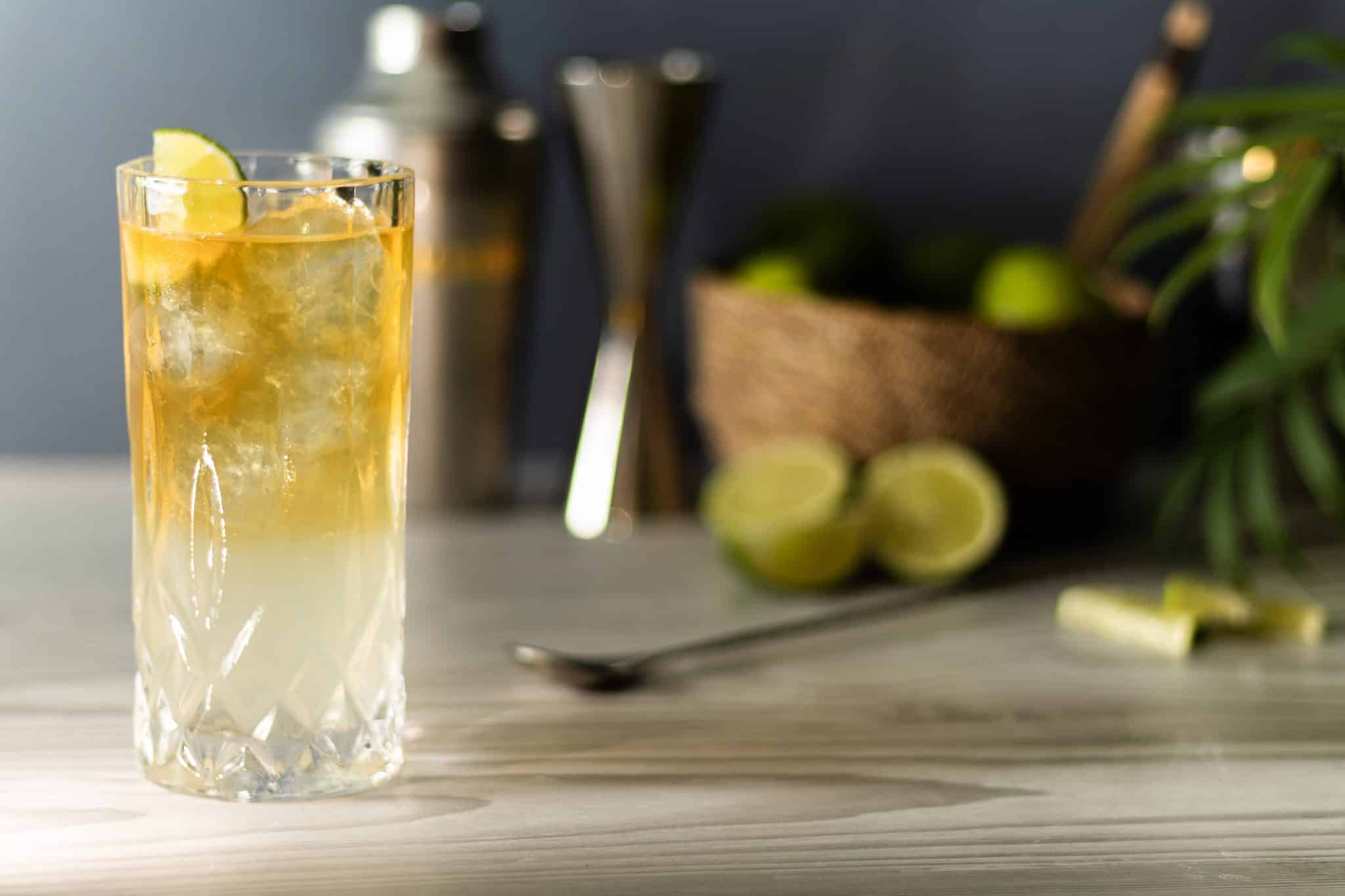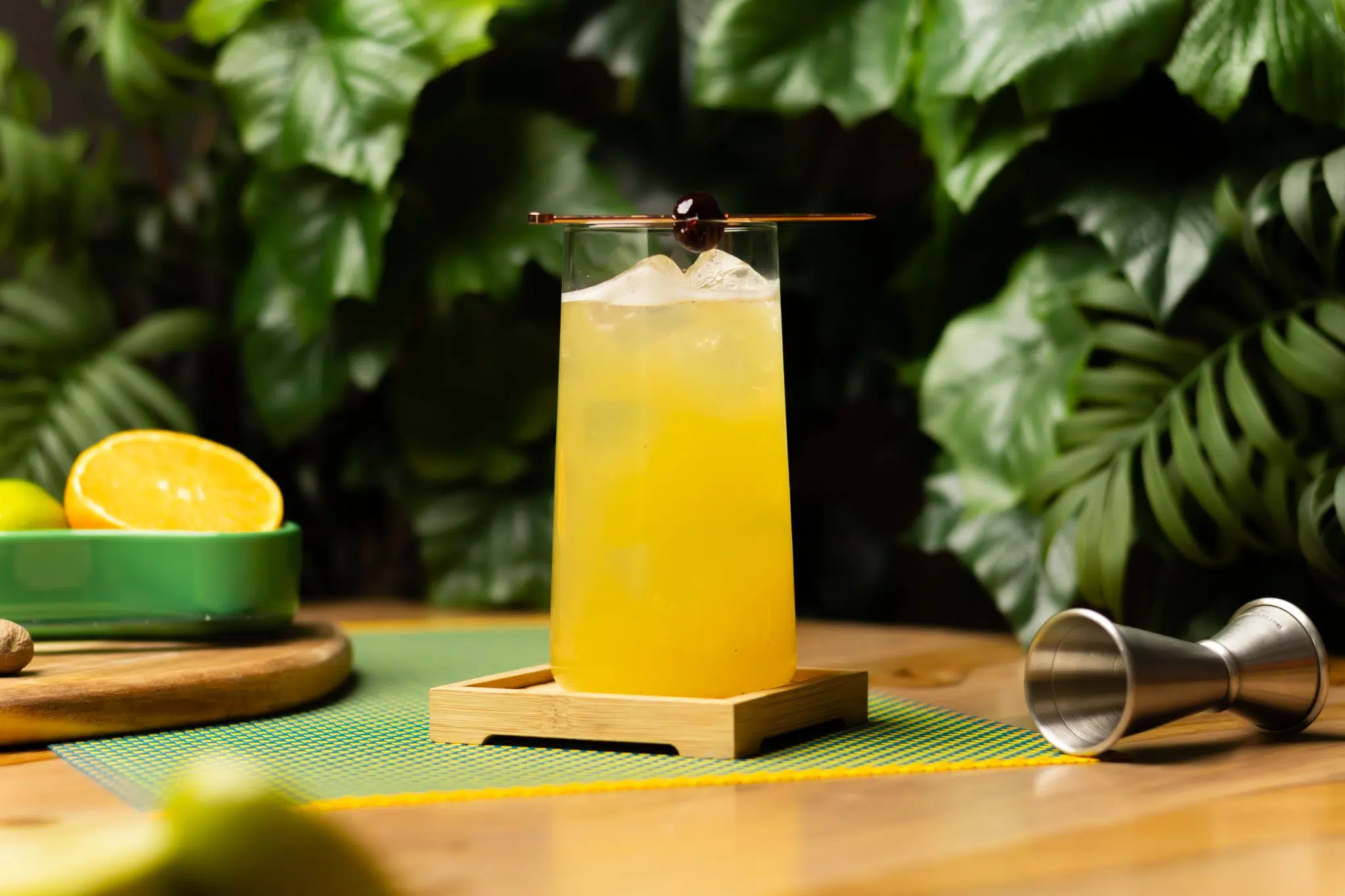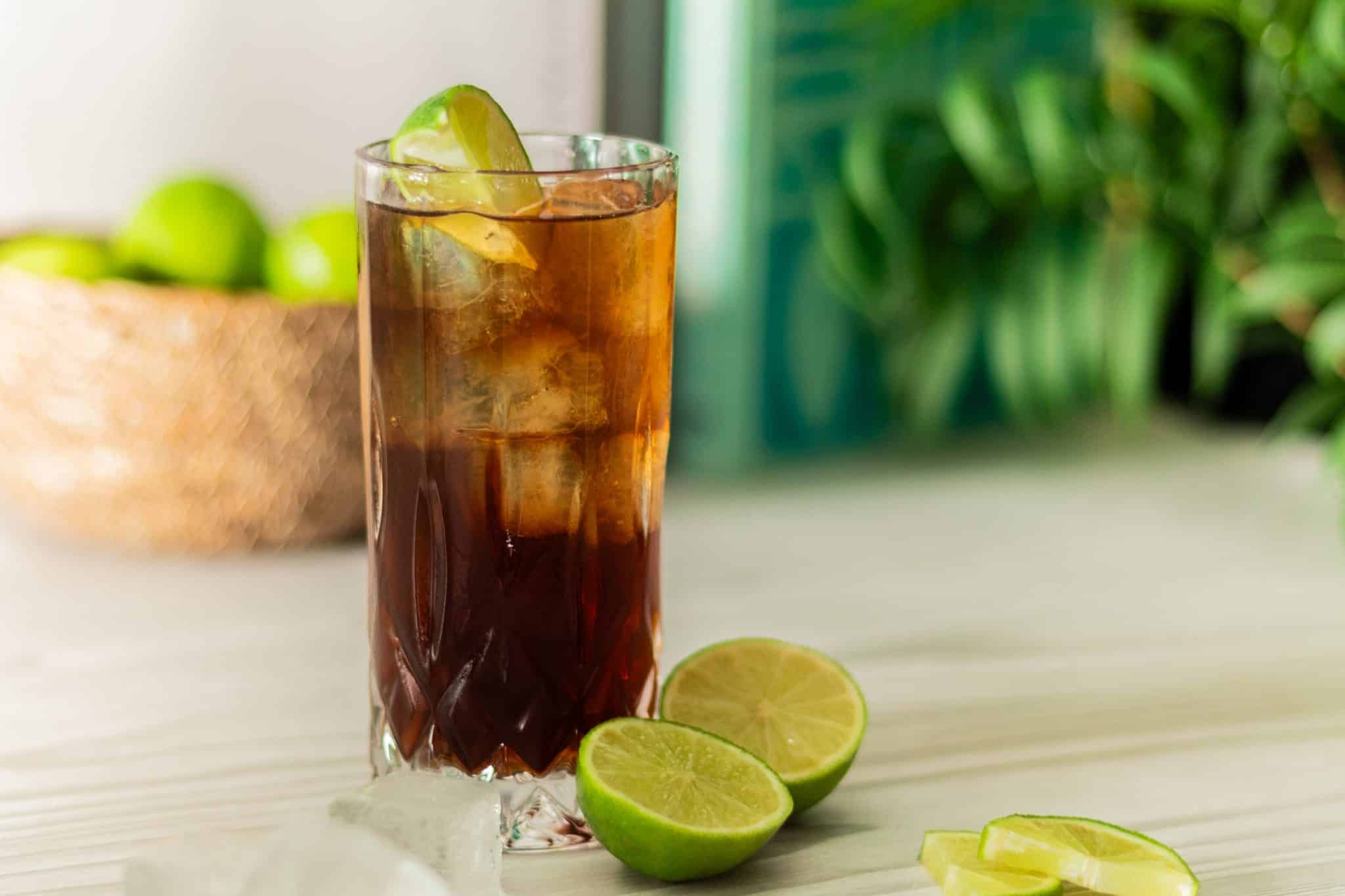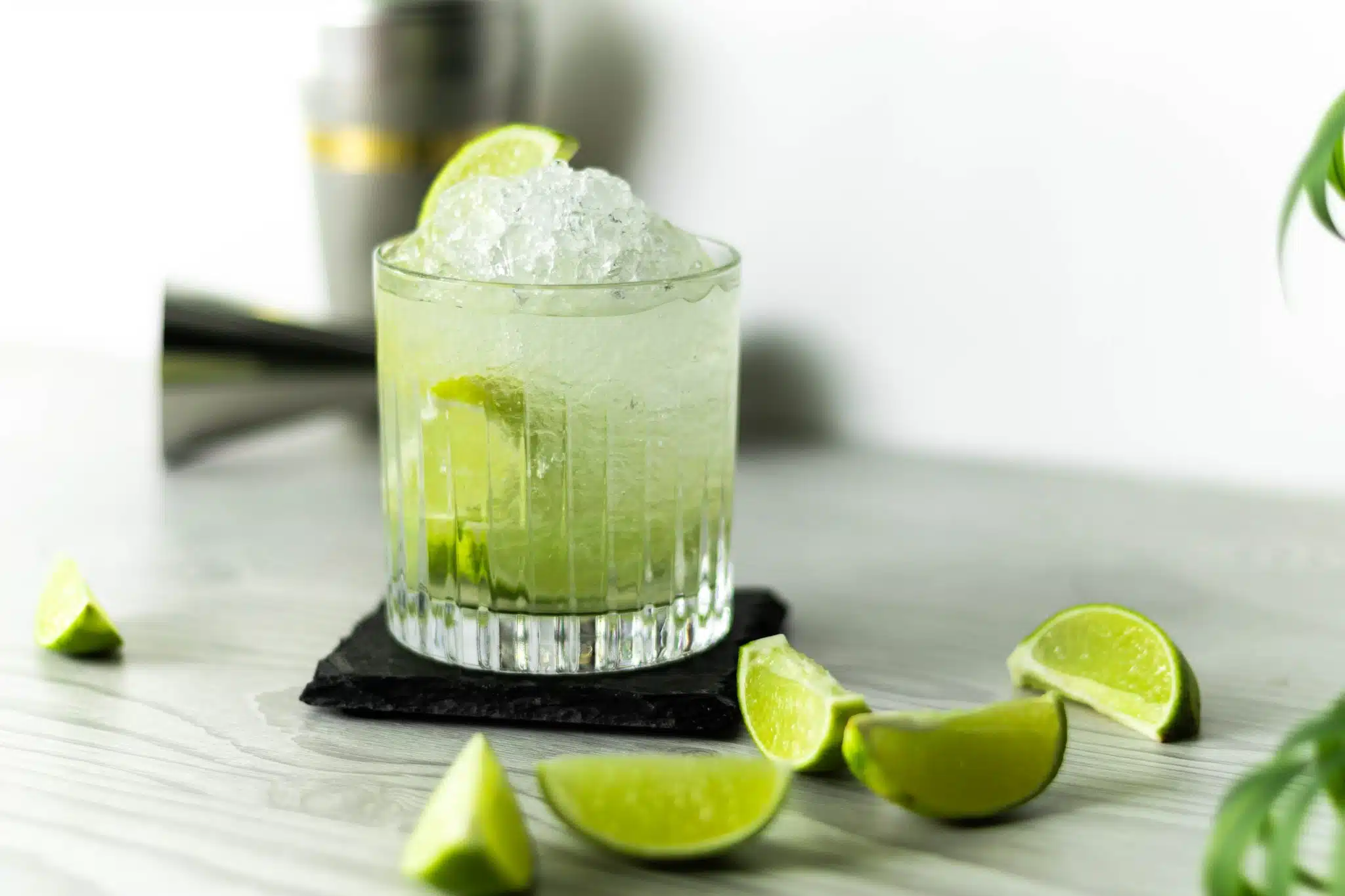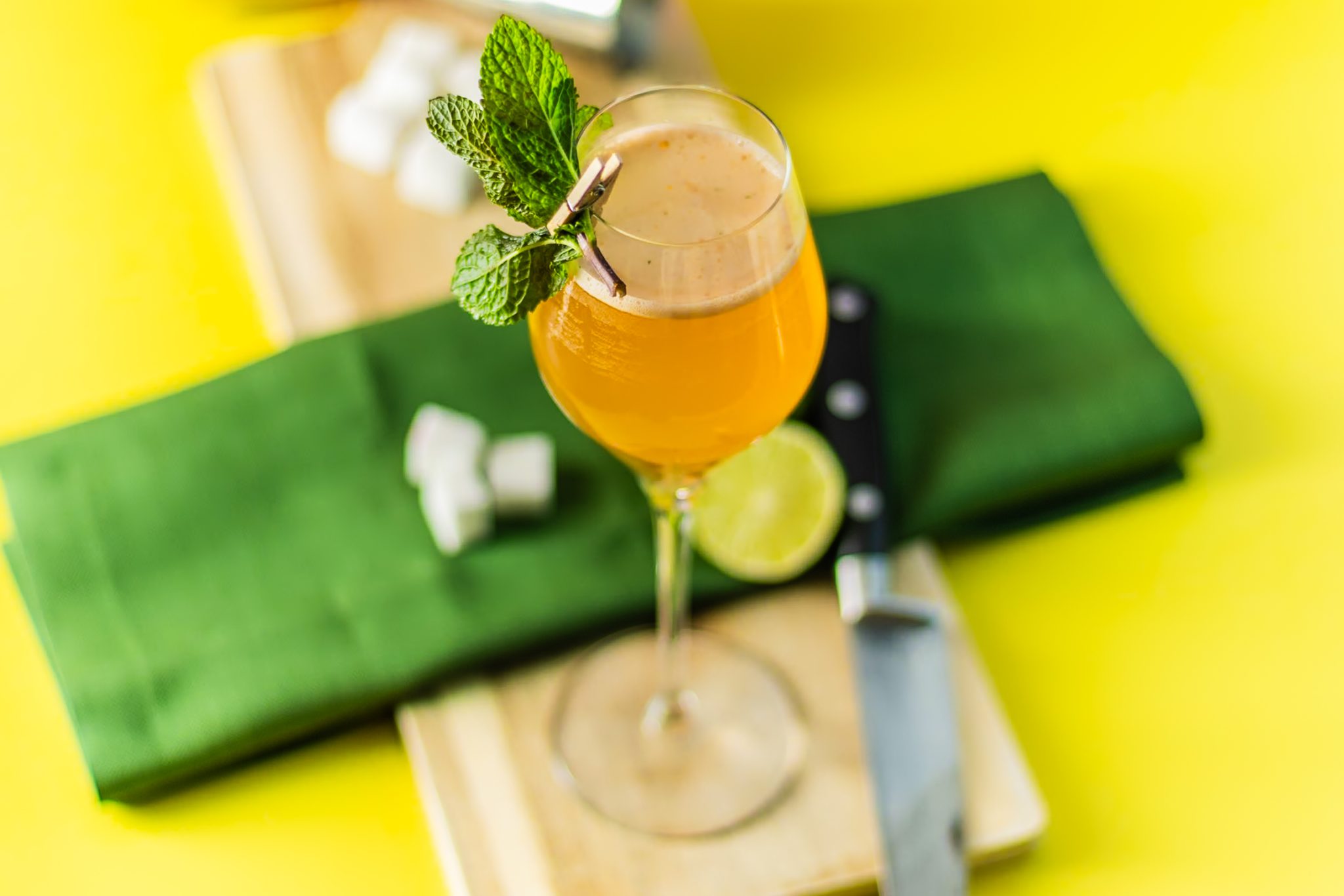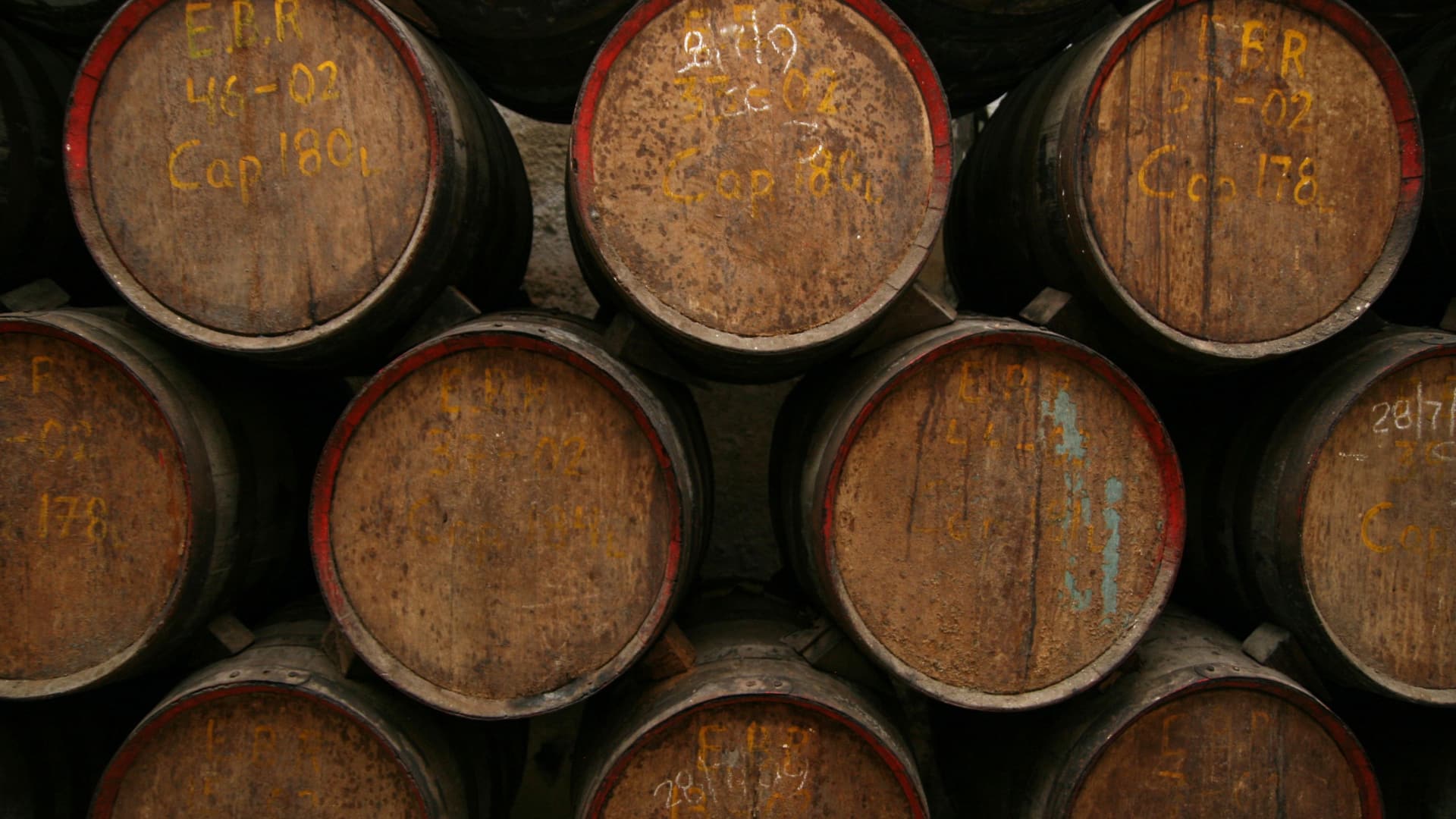Home / Rum
Rum
- Updated September 13, 2024
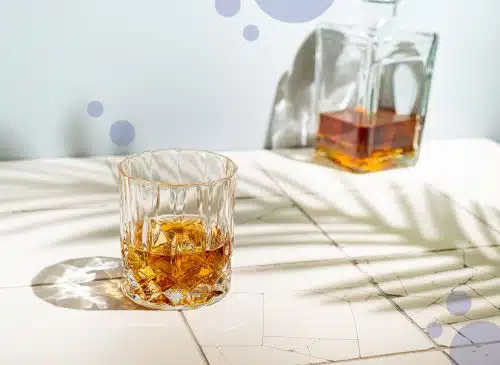
Rum Guide – What to Know Before You Shop Rum Online
The word “rum” might instantly transport you to a beach party or a pirate ship, but hold on a minute: this Caribbean gem is more than just a mixer for your Coke. Rum is a bona fide spirit with a rich history, offering nuances that rival fine whiskeys and cognacs. Seriously, it shares more with a sippable bourbon than with that bottle you hastily grabbed for a college kegger. Sure, it’s stellar as a shot, but it also shines in sophisticated cocktails like the Old Cuban or a classic Mai Tai. So, move over, stereotypes—rum is ready for its close-up, and here’s what you need to know!
What is Rum?
Rum is a distilled alcoholic beverage made from sugarcane byproducts, such as molasses, or directly from sugarcane juice. It is usually aged in wooden barrels and comes in various types and flavors.
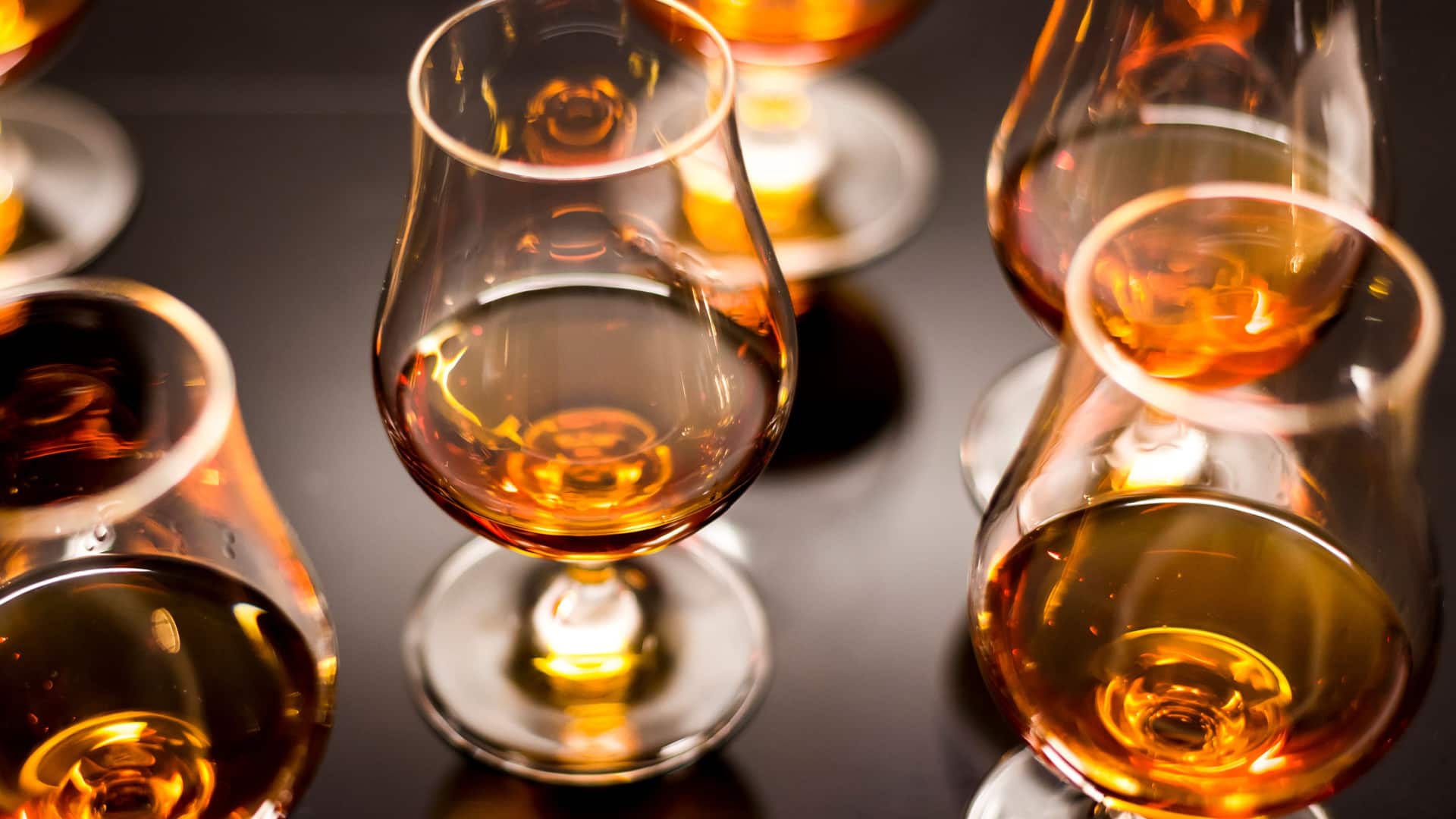
Different types – From White Rum to Dark Rum.
Different types of Rum offer diverse flavors, colors, and aging processes. Here are some of the most common types:
White Rum
Distillers age this Rum for a short period, often in stainless steel tanks, which results in a clear, light spirit. White Rum has a crisp, clean flavor profile with hints of citrus and vanilla. It’s a go-to choice for cocktails like Mojitos and Daiquiris.
Dark Rum
A longer aging process in charred wooden barrels gives dark Rum its richer, fuller flavor. Notes of caramel, molasses, and spices like cinnamon and nutmeg are common. Dark Rum shines in cocktails like Dark ‘n’ Stormy and Rum Old Fashioned, or you can enjoy it neat.
Gold Rum
This type sits between white and dark rums in flavor and color. A moderate aging process in wooden barrels imbues it with subtle caramel and vanilla flavors. Gold Rum works well in cocktails where you want more complexity than white Rum but less intensity than dark Rum.
Spiced Rum
This Rum features a range of spices, such as cinnamon, clove, and anise, that distillers infuse into the spirit. The result is a warm, complex drink that pairs well with mixers like cola or can add a spiced kick to various cocktails.
Overproof Rum
With an alcohol content often exceeding 75% ABV, overproof Rum is intensely strong. It packs a powerful punch in flavor and potency and is generally used in small quantities for cocktails or culinary purposes.
Aged Rum
Often labeled with how many years it has been aged, this type of Rum can offer a complex and nuanced flavor profile. Distillers age it for an extended period in high-quality wooden barrels, producing flavors akin to fine whiskey or brandy, such as oak, tobacco, and dried fruits.
Rhum Agricole
Made directly from sugarcane juice rather than molasses, this French Caribbean Rum offers a grassier, more herbal flavor profile. It can be white, gold, or aged but always retains that distinct sugarcane essence.
Flavored Rum
Distillers infuse this Rum with flavors like coconut, mango, or pineapple to create a sweeter, more dessert-like spirit. These rums usually serve as the base for fruity cocktails or drinks served over ice.
Black Rum
This is a dark, intensely flavored rum, often with added molasses or caramel coloring. It’s richer and heavier than other types, often used in cooking or cocktails that can handle its robust flavor.
Navy Rum
Historically associated with the British Royal Navy, this type of Rum is a blend of rums from various English colonies. It tends to be dark, rich, and strong, fit for a sailor’s ration.
What does Rum taste like?
Rum tastes sweet with notes of caramel and molasses and can have fruity, spicy, or smoky flavors, depending on its type.
White rum is light and crisp, often revealing subtle hints of vanilla and citrus. Gold rum is smoother than its white counterpart, featuring gentle flavors of caramel and a touch of spice. Dark rum is rich and robust, boasting strong notes of molasses and, in some cases, even tobacco or leather. Spiced rum comes infused with various spices like cinnamon, cloves, and nutmeg, making it both aromatic and flavorful. Flavored rum offers a burst of fruitiness, with flavors like coconut, pineapple, or mango layered over the base rum taste. Aged rum is complex and incredibly smooth, often revealing nuanced flavors of oak, caramel, and sometimes a hint of smokiness due to aging.
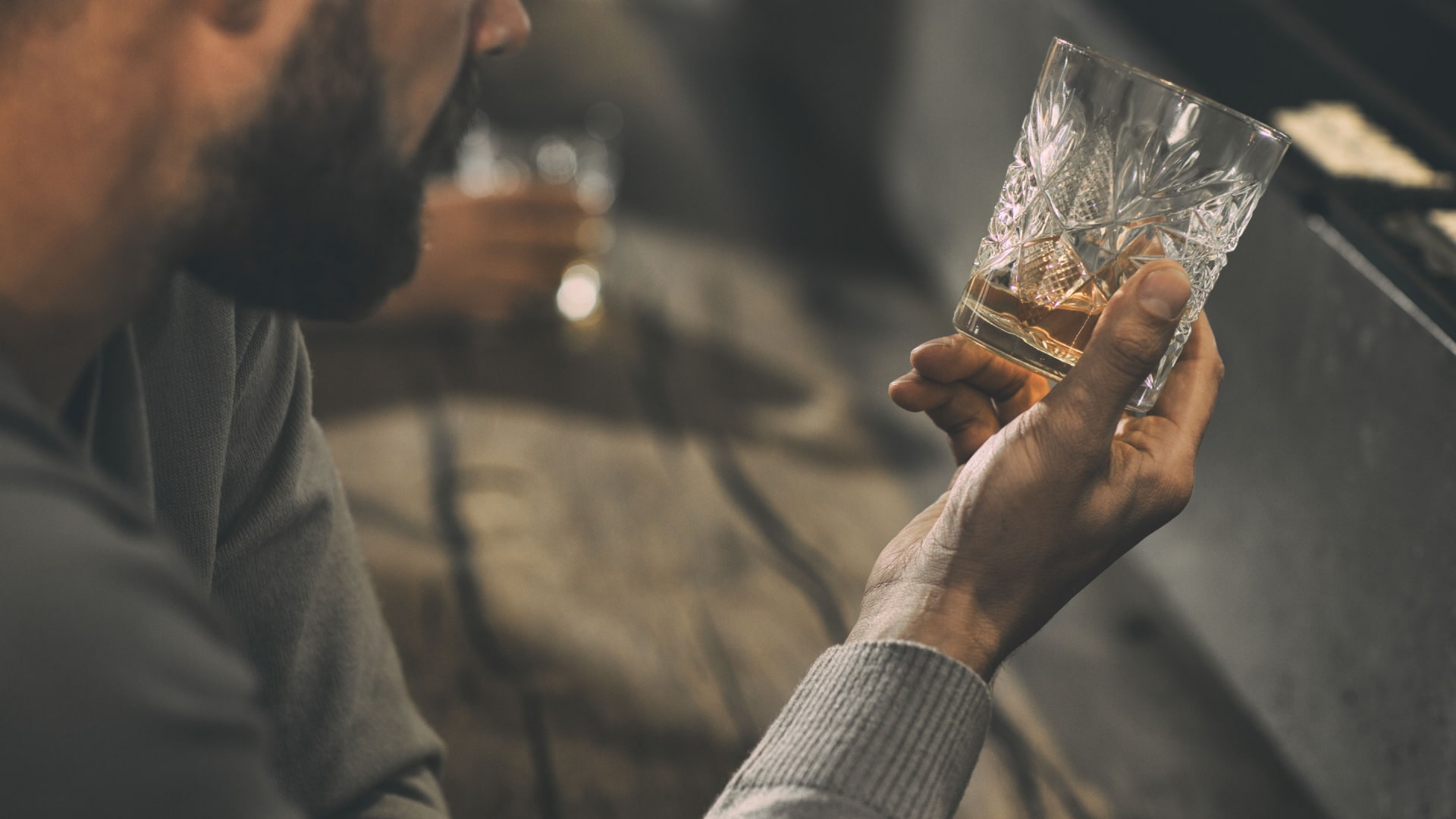
How much alcohol is in Rum?
Rum typically has an Alcohol by Volume (ABV) ranging from 35% to 50%, translating to 70 to 100 proof in the United States. Exceptions include overproof rums, which can exceed 50% ABV, and light or flavored rums, which may have lower ABV levels.
It stands mid-range in alcohol content, similar to vodka, gin, whiskey, and brandy, which usually have ABVs around 40% to 60%. It’s stronger than liqueurs, which have ABVs between 15% and 30%, and significantly stronger than wines and beers, which typically range from 4% to 15% ABV.
Are there any Rum substitutes?
Absolutely! If you need to substitute rum, use vodka or gin for light rum and brandy or bourbon for dark or spiced types. For a non-alcoholic alternative, apple or white grape juice can replace light rum, and a blend of pineapple juice and molasses can stand in for dark rum. Always consider the flavor balance in your recipe when choosing a substitute to ensure a good result.
Top Best Rum Brands (Yes, Bacardi and Havana are included…)
Bacardi
Bacardi was founded in 1862 in Cuba and is one of the most recognizable rum brands in the world. The company’s signature white Rum is an ingredient for many classic cocktails like Mojitos and Daiquiris. Bacardi also offers flavored, gold, and dark rums, each featuring a unique taste profile.
Captain Morgan
Captain Morgan specializes in spiced rums, with its Original Spiced Rum leading the pack. Named after a 17th-century pirate, the brand exudes a sense of adventure and fun. The spiced Rum blends Caribbean rum and spices like vanilla and cinnamon.
Mount Gay
Mount Gay from Barbados boasts a rich history dating back to 1703. The brand is famous for its Eclipse rum, which offers a balanced flavor profile with banana and almond notes. Mount Gay also produces premium aged rums that are perfect for sipping.
Appleton Estate
Appleton Estate from Jamaica produces a variety of aged rums. The brand is renowned for its complex and aromatic flavor profiles, often featuring tropical fruits, nuts, and spices notes. The Appleton Estate Rare Blend 12-Year-Old is particularly popular among connoisseurs.
Ron Diplomático
This Venezuelan brand has gained international acclaim for its Reserva Exclusiva, a dark rum that has won numerous awards. It offers a rich, sweet profile with fruitcake notes, rum-raisin ice cream, and dark chocolate.
Kraken
Kraken is a black spiced rum known for its unique Victorian bottle and its mythical sea creature logo. The Rum itself features strong notes of cinnamon, ginger, and clove, making it a hit for cocktails that benefit from a spiced kick.
Havana Club
Havana Club from Cuba is famous for its light, smooth rums, ideal for cocktails. The Añejo 7 Años is one of its standout offerings, aged for seven years to achieve a rich, full-bodied flavor that works well neat.
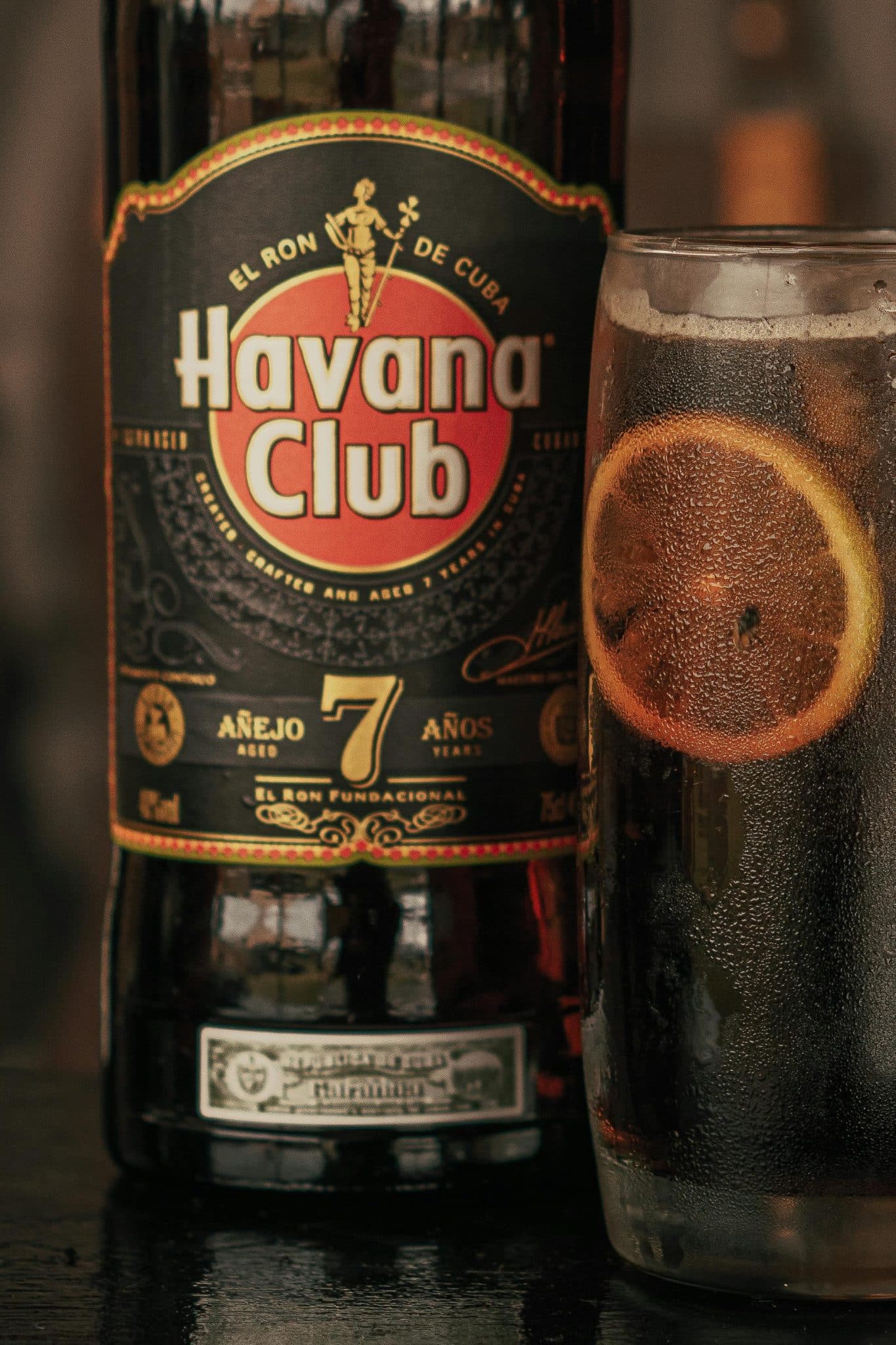
Wray & Nephew
This Jamaican rum brand is well known for its overproof rum perfect for tropical cocktails. It is recognized for its vibrant and bold flavors.
El Dorado
El Dorado rum comes from Guyana and is famous for its Demerara rums, which are named after a river where sugarcane grows. The 12-year and 15-year varieties are particularly noteworthy, offering complex notes of toffee, fruit, and spices.
Plantation Rum
Plantation Rum sources its spirits from various Caribbean locations and then ages them further in France. The brand is famous for its vintage editions and Pineapple Stiggins’ Fancy, a rum infused with the essence of pineapple for a unique and aromatic experience.
Where to buy Rum online?
If you’re looking to buy Rum online, you have several reputable options, each with advantages. Here are some places where you can shop for your favorite bottle of Rum:
Drizly
Drizly operates like Uber for alcohol, connecting local liquor stores with customers. In many cases, you can browse a vast selection of Rum online and have your choice delivered to your doorstep within an hour. The user-friendly platform offers filters by brand, price, and type of Rum, making it easy to find exactly what you’re looking for.
Total Wine & More
Total Wine is a large U.S.-based alcohol retailer with a comprehensive online store. They offer various rums, from budget options to premium aged bottles. While they provide delivery services, they also allow you to buy online and pick up at a nearby store, which can be more convenient for some shoppers.
Wine.com
Although the name suggests a focus on wine, Wine.com also has a decent selection of Rum. They offer various types, including white, dark, and spiced rums, from different regions. The site includes detailed descriptions and customer reviews to help you make an informed decision.
The Whisky Exchange
This UK-based online retailer offers international shipping and has an extensive selection of Rum. The Whisky Exchange features bottles from around the globe, including rare and collectible items. They also provide in-depth information on each product and customer reviews, helping you make the best choice for your taste and budget.
Master of Malt
Another UK-based online store, Master of Malt, specializes in hard-to-find spirits, including many rums. They also offer sample-sized bottles, allowing you to try them before making a full-sized purchase. Shipping options are available for multiple countries.
Caskers
Caskers offers a curated selection of high-quality rums, focusing primarily on craft spirits and limited-release bottles. While their selection may not be as extensive as some other sites, the quality of choices is generally excellent. They also run frequent promotions and offer membership clubs for spirit enthusiasts.
Each platform has its shipping policies, delivery areas, and fees, so checking the details before purchasing is advisable.
Why we like Rum
We all love rum! To start, Bacardi is a big hit with us—it’s so light and crisp, making it a go-to for a refreshing mojito. Moreover, it’s fantastic how adaptable rum is—we can mix it into cocktails like the classic Pina Colada. On top of that, there’s a wide range of options, from the spicy Captain Morgan to the strong Wray & Nephew, ensuring there’s a rum for everyone!
How much does Rum cost – Price Ranges
The price range of rum varies depending on factors like aging, origin, and production methods. Here’s a breakdown of what you might expect to pay for different categories:
- Budget-Friendly ($10- $20)
In this range, you’ll find rums that are great for mixing into cocktails but might not be the best for sipping neat. Brands like Bacardi Superior and Captain Morgan fall into this category.
- Mid-Range ($20 – $50)
These rums often offer a balance between quality and price, making them suitable for mixing and sipping. Think brands like Mount Gay Eclipse, Appleton Estate Signature Blend, or Kraken Black Spiced Rum.
- Premium ($50 – $100)
In this category, you’ll find rums that have been aged longer and offer a more complex flavor profile. Brands like Diplomático Reserva Exclusiva or Ron Zacapa Centenario 23 are examples of rums that are ideal for sipping and savoring.
- Ultra-Premium ($100+)
These are top-shelf bottles, often produced in limited quantities and aged for extended periods. Examples include El Dorado 21-Year-Old or Foursquare Sagacity. These rums offer intricate, nuanced flavors and are best enjoyed neat or with a drop of water.
- Rum under $7
Finding rum under $7 involves looking at smaller bottles from less well-known or generic brands. The quality of these budget rums may not be as high as more well-known brands, but they can serve the purpose if you’re looking for a cheap option for mixing. Here are some lesser-known brands where you might find smaller bottles for under $7:
- Prestige – Often found in plastic bottles and primarily used for mixing.
- Ron Carlos – A budget-friendly option, commonly available in smaller sizes.
- Ron Llave – Another affordable rum that’s typically found in economy stores.
- Skol – Not just a name in vodka; their rum is budget-friendly as well.
- Bellows – Known for being economical and available in smaller bottle sizes.
- Mr. Boston – Often seen in small bottles and used in mixed drinks.
How to drink Rum?
You can drink rum neat, on the rocks, or mix in cocktails like Mojitos and Daiquiris. You can also enjoy rum in punches, use it for culinary purposes like rum-flavored desserts, or experience it through tasting flights to compare different types and flavors.
- Neat or On the Rocks
For premium aged rums with complex flavors, you need nothing more than a glass. Pour a small amount into a snifter or a tumbler and savor it neat, or add a couple of ice cubes if you prefer chilled. The ice gradually melts, subtly changing the flavor and character of the Rum.
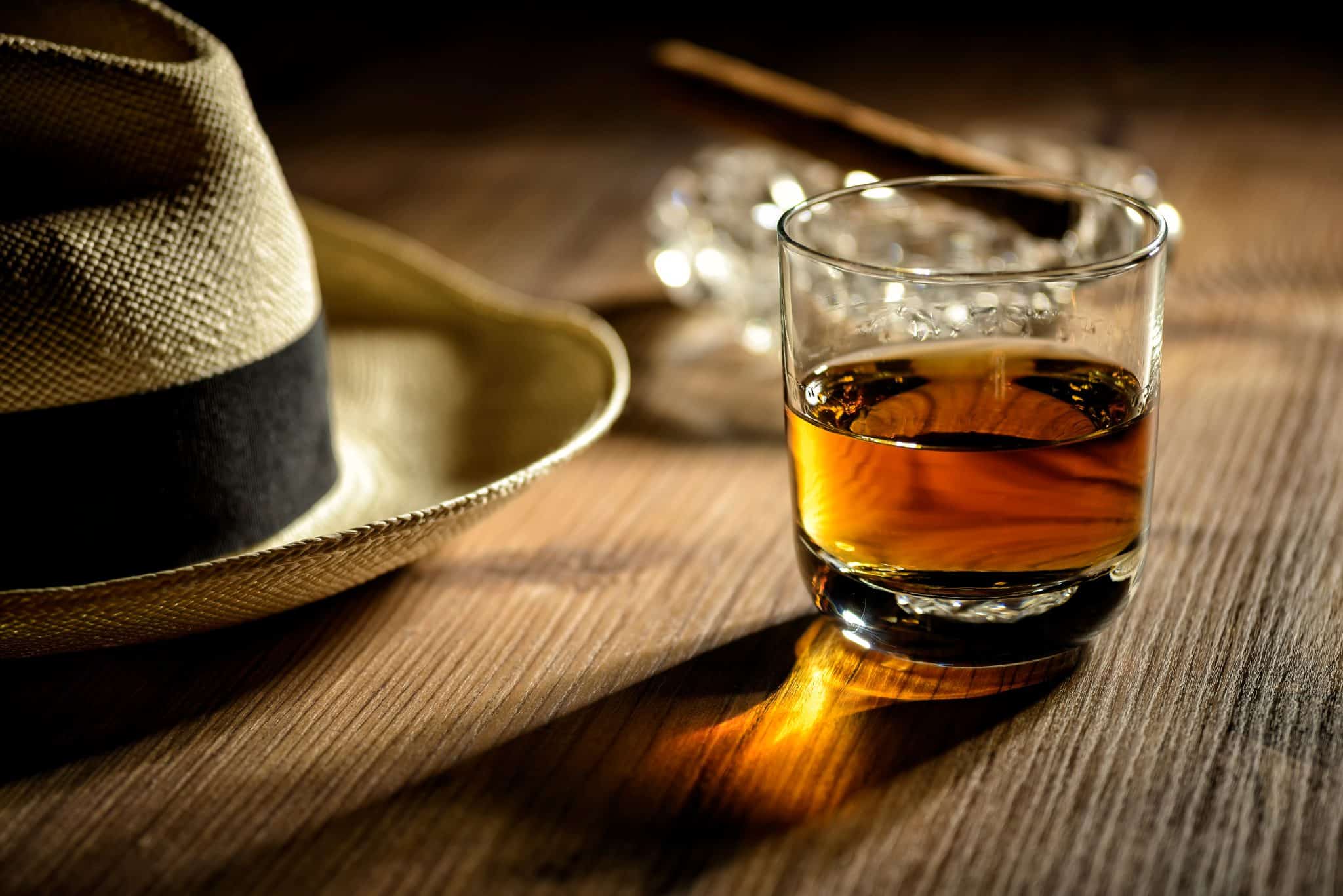
- In Cocktails
White Rum works exceptionally well in cocktails like Mojitos, whose light flavor mixes with mint, lime, and soda. For a Daiquiri, blend white Rum with lime juice and simple syrup, then shake it well with ice. Dark Rum adds complexity to cocktails like the Dark ‘n’ Stormy, whose rich flavor contrasts spicy ginger beer.
- With Mixers
You can mix Rum with various non-alcoholic beverages for a refreshing drink. Spiced rum pairs wonderfully with cola, while white Rum goes well with tropical fruit juices like pineapple or mango. Add the Rum to a glass, pour in your chosen mixer, and stir.
- Rum Punch
Rum punch serves as a festive option for gatherings or celebrations. Combine different types of Rum with fruit juices, soda, and perhaps a touch of spice or bitters. Serve it in a large bowl with a spoon so guests can help themselves.
- Culinary Uses
Rum also has a place in the kitchen. You can use it to flambe desserts, marinate meats, or add a splash to sauces and gravies for an extra layer of flavor. Some cakes and pastries also include Rum as an ingredient, where its sweetness complements the dish.
- Tasting Flights
Select various types of Rum, pour a small amount of each into separate glasses, and sample them in succession. Take note of the different flavors, aromas, and textures to appreciate the diversity of this spirit.
Popular Rum cocktails
Mojito
A Mojito blends white Rum, mint leaves, lime juice, sugar, and soda water. You can directly muddle lime wedges with sugar and bash the mint leaves to release their oils, then add Rum and top with soda. Serve it over ice for a thirst-quenching experience.
Daiquiri
This classic cocktail combines white Rum, lime juice, and simple syrup. Shake these ingredients together with ice and strain them into a chilled glass. A Daiquiri showcases the crispness of white Rum while balancing sweetness and tartness.
Piña Colada
The Piña Colada is a tropical drink made of white Rum, coconut cream, and pineapple juice. Blend these ingredients with ice until smooth. Serve it in a chilled glass, often garnished with a pineapple slice or cherry.
Dark ‘n’ Stormy
This cocktail pairs dark Rum with ginger beer and a splash of lime juice. Fill a glass with ice, pour ginger beer and lime juice, then add dark rum on top. The intense, rich flavors of dark Rum perfectly complement ginger beer’s spiciness.
Rum Punch
Rum Punch mixes various types of Rum with fruit juices, and sometimes bitters and syrups. It’s a flexible cocktail you can adjust to taste, often following the formula of “one sour, two sweet, three strong, four weak.” Serve it in a large bowl for gatherings.
Cuba Libre
The Cuba Libre is Rum and cola with a lime twist. Add ice to a glass, pour in white or gold Rum, squeeze in some lime juice, and top with cola. Stir and enjoy this simple yet satisfying drink.
Caipirinha
Though traditionally made with cachaça, a Brazilian spirit, some variations use white Rum. Muddle lime wedges and sugar at the bottom of a glass, fill it with ice and add Rum. Stir well to blend the flavors.
Mai Tai
The Mai Tai combines white and dark rums with lime juice, orgeat syrup, and Curaçao. Shake all the ingredients with ice and strain into a glass filled with ice. It’s a tropical cocktail with layers of flavor from the almond notes of orgeat to the citrus kick of lime and Curaçao.
Zombie
A Zombie is a potent mix of white, golden, and dark rums with fruit juices and syrups like grenadine or falernum. Shake all ingredients with ice and pour into a tall glass. It’s a strong cocktail, often served with a warning due to its high alcohol content.
Old Cuban
An Old Cuban is like a Mojito but with added sophistication from champagne. Muddle mint leaves with simple syrup and lime juice, add aged Rum, and shake with ice. Strain into a cocktail glass and top with champagne for a fizzy finish.
What are the ingredients of Rum?
Making Rum involves just a few basic ingredients: sugarcane juice or sugarcane byproducts like molasses, water, and yeast. Some rums may include additional flavorings or spices, especially spiced or flavored ones.
- Sugarcane Juice or Molasses
Sugarcane juice comes directly from crushing sugarcane stalks. Some rums, particularly agricultural rums typical in French Caribbean territories, use this fresh juice as their base. Molasses, a byproduct of refining sugar cane into sugar, is the starting point for most other types of Rum.

- Water
Water dilutes the sugarcane juice or molasses to reach the desired sugar concentration before fermentation. Producers also use water to dilute the distilled spirit to bottling strength.
- Yeast
Yeast converts the sugars in the sugarcane juice or molasses into alcohol and carbon dioxide during fermentation. The choice of yeast strain can significantly influence the flavor and aroma of the final product.
- Flavorings or Spices (Optional)
Spice or flavored rums have additional ingredients like vanilla, cinnamon, or fruit extracts. These additions usually occur after distillation but before bottling.
These basic ingredients undergo the processes of fermentation, distillation, and often aging to produce the wide variety of rums available on the market.
How is Rum made?
The process of making Rum involves the following steps: harvesting sugarcane, extracting its juice or creating molasses, fermenting, distilling, aging (for certain types), and finally bottling. Here’s how it unfolds:
1. Sugarcane Harvesting and Juice Extraction
Producers start by harvesting sugarcane stalks, which they then crush to extract the sugarcane juice. Sometimes, they process the juice further to create molasses, a thick, syrupy byproduct of sugar production.
2. Creating the Mash
Next, water is added to the sugarcane juice or molasses to create a mash. The water dilutes the sugar content to a level suitable for fermentation.
3. Fermentation
Yeast is introduced into the mash to kickstart fermentation. The yeast consumes the sugar and transforms it into alcohol and carbon dioxide. This process usually takes a few days and produces a liquid called “wash” with low alcohol content.
4. Distillation
The wash then goes into a still for distillation. Distillers usually use either pot stills for fuller, more robust rums or column stills for lighter rums. The distillation process increases the alcohol content while separating the alcohol from water, impurities, and undesirable flavors.
5. Aging (Optional)
Some rums undergo an aging process in wooden barrels, often made of charred oak. Aging adds complexity, color, and depth to the Rum. The duration and type of barrel can significantly impact the final flavor.
6. Filtering and Blending (Optional)
After aging, some rums are filtered to remove color or impurities. Master blenders may also combine different batches to achieve a consistent flavor profile.
7. Bottling
Finally, water is added to the distilled (and possibly aged) Rum to lower it to the desired alcohol content for bottling. Producers may add flavorings or spices to create flavored or spiced rums at this stage.
8. Labeling
Before the Rum hits the shelves, it gets labeled according to its type—white, gold, dark, spiced, etc.—and is sealed for distribution and sale.
Each process step contributes to the Rum’s final flavor, aroma, and character, leading to the diverse range of rums available today.
Food Pairing
Rum goes great with lots of food. If you’re eating spicy chicken wings, try a sweet rum; it can cool the spice and make everything taste better. If you’re enjoying grilled pineapple or peach cobbler, dark rum can make those sweet flavors pop.
Eating creamy chocolate cake or rich chocolate mousse? A spiced rum can add a nice spicy touch and make your dessert taste even better! And rum can make those sweet flavors stand out if you have vanilla cupcakes or caramel brownies.

Nutritional facts
The USDA supplies the nutritional data for a single shot of Rum, which weighs 42 grams or 1.5 ounces. Here’s a table summarizing the nutritional facts:
|
Nutrient |
Amount |
Unit |
|---|---|---|
| Calories | 97 | kcal |
| Protein | 0 | grams |
| Fat | 0 | grams |
| Carbohydrates | 0 | grams |
| Fiber | 0 | grams |
| Vitamins | 0 | — |
| Minerals | 0 | — |
| Alcohol Content | 35-50% | Percentage |
Note: The nutritional values can vary slightly depending on the specific brand and type of Rum. Flavored or spiced rums may contain additional calories from sugars and flavorings.
History and Origin of Rum
Sugar cane workers in the Caribbean first made rum in the 17th century. They discovered that molasses, a byproduct of sugar production, could ferment into alcohol. The first rum distillation took place on sugarcane plantations in the Caribbean Islands. Barbados often claims the title of the birthplace of rum, although the exact origins remain unclear.
Colonial traders quickly recognized rum’s value and began exporting it to England and the North American colonies. It became a key commodity in the triangular trade among Africa, the Caribbean, and the American colonies, where traders exchanged rum for slaves and goods.
The popularity of rum skyrocketed in the American colonies during the 18th century. It not only served as a drink but also as a form of currency at times. During the American Revolution, the Continental Army even gave rum rations to soldiers.
The British Navy also played a significant role in popularizing rum. In 1655, after capturing Jamaica from the Spanish, the British started giving their sailors daily rum rations instead of the previous allowance of beer or brandy. This tradition continued until 1970, contributing to rum’s association with seafaring.
In the 20th century, rum was associated with tropical locales and cocktails, partly due to its inclusion in drinks like the Mojito and the Daiquiri. Brands like Bacardi helped standardize and popularize rum worldwide.
FAQs
- Is Rum stronger than vodka? No, they usually have similar alcohol content, generally around 40% alcohol by volume (ABV). There are variations of each that can be more or a bit less potent, depending on the brand and the specific product
- Is Rum aged? Some rums are aged in wooden barrels to add complexity, color, and depth, while others are unaged and lighter in flavor.
- Can you drink Rum straight? Yes, many people enjoy sipping aged or premium rums neat or on the rocks.
- What are some popular Jamaican rum brands? Appleton Estate and Myers’s are among the most notable, offering a variety of premiums. Other notable brands include Wray and Nephew, known for its high-proof white rum, and Blackwell Rum.
- What is the difference between Rum and whiskey? Rum originates from sugarcane or its byproducts, while whiskey comes from grains. Moreover, the aging process and types of barrels used differ.
- Is Rum gluten-free? Generally, Rum is gluten-free, as it comes from sugarcane. However, flavored or spiced rums might contain additives with gluten.
- How do you store Rum? Store rum in a cool, dark place and keep it upright to maintain its quality.
- Does Rum go bad? Unopened bottles can last for years, while opened bottles are best consumed within one to two years for optimal flavor.
- How many calories are in Rum? A standard 1.5-ounce shot of Rum typically contains around 100 calories, though this can vary.
- Can you cook with Rum? Rum works well in various culinary applications, such as sauces, marinades, and desserts like rum cake.
- Is Rum keto-friendly? Plain Rum contains no carbs, making it relatively keto-friendly when consumed in moderation.
- Can Rum be used for cleaning? While not its primary purpose, the high alcohol content in overproof Rum can act as a disinfectant in a pinch.
- How does Rum differ from rum liqueurs? Rum liqueurs contain Rum but have added sugar and flavorings, making them sweeter and less potent than traditional Rum.
- What rum did pirates drink? Pirates often drank a less refined type of rum made from molasses, commonly nicknamed “Kill-Devil.” They also consumed “grog,” a mixture of rum, water, and sometimes lime juice or sugar.
